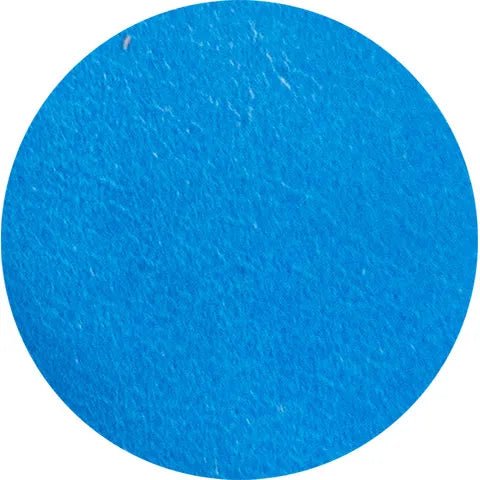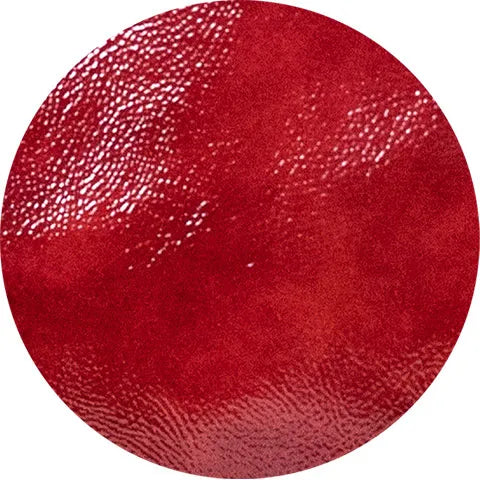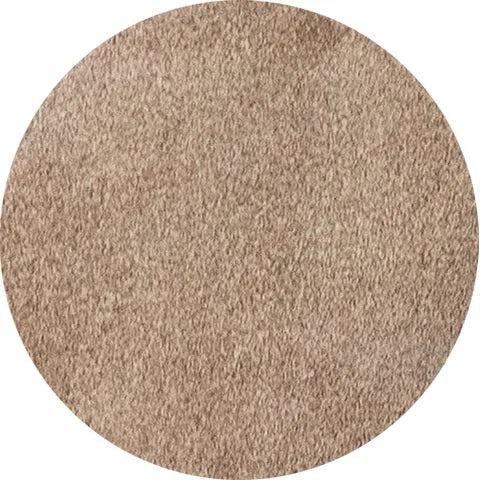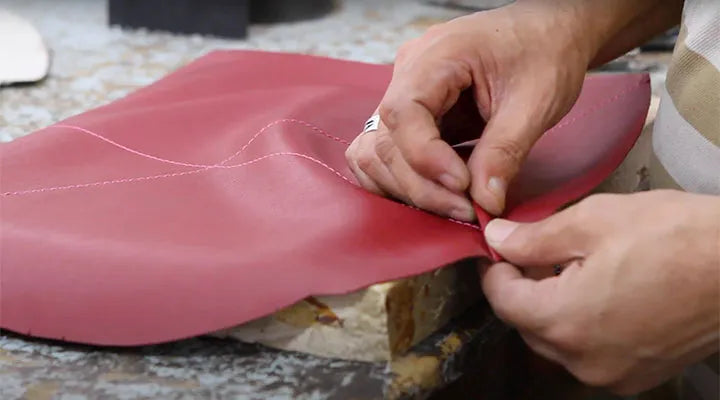Craftsmanship & Materials
What kind of leather do we use at WafaaWali?
At Wafaawali, we strictly use either bovine or buffalo leather. Bovine leather, is usually softer ad fuller while buffalo leather is harder. Leather can be tanned and finished in different ways. Our products mostly use the following kinds of leather tanning.

Full Grain Leather
A tanning that preserves the imperfections and blemishes that are part of leather in its raw form. This method of tanning makes the leather strong and durable.
Over time, the surface of full grain leather changes in a way that reflects the personality of its owner and creates a pleasing effect.

Crust Leather
What is also called Laminated leather is a type of leather that has a metallic layer added to the surface of leather during the finishing process.
This layer makes the leather extra shiny and bright.

Nubuck Leather
A kind of tanning that makes the top layer of the leather has a velvety feel. When touched, the outer layer of the leather moves in a way that creates different hues.
Nubuck leather can be used on both sides, the front and the back but each side has a different grain and feel.
Where does our leather come from?
Wafaawali procures its leather from Piel Tannery, an Egyptian joint venture that creates and designs leather for the local and international market. The establishment is based in Quesna Free Zone and boasts more than 1300 employees.
The establishment is committed to the principles and ethics of sustainability and social responsibility. Working conditions ensure humane treatment and health of workers. Safe chemicals are used in the process of tanning and finishing the leather which makes the leather eligible for export to European countries.
Why is leather sustainable?
Leather is one of the oldest creations in the history of humanity. Our ancestors created leather garments to cover and protect their bodies from harsh weather conditions, created containers to carry water and food items, and used animal skin as flooring in caves.
Wall paintings in tombs and artifacts left behind from 5000 B.C, show that Egyptians used leather for sandals, clothes, gloves, buckets, bottles, shrouds for burying the dead and for military equipment. The ancient Greeks are credited with developing tanning formulas using certain tree barks and leaves soaked in water to preserve the leather.
It is with the industrialization of leather manufacturing in the 18th and 19th centuries that concerns regarding the use of chemicals and the working conditions of workers were raised.
The process of tanning leather
The process of tanning leather can involve a lot of chemicals that are harmful to the environment and the workers who participate in this process.
Those chemicals usually end in the water streams and intoxicate bodies of waters thus killing marine life and contaminating drinking water. Also, toxic fumes emitted during the tanning process have serious ramifications on the lungs of workers.
Fortunately, during the last 10 years, more attention is being paid to those issues. Tanneries and factories are now required abide by rules and regulations that control the use of chemicals and ensure that only “safe” chemicals are used in the process of tanning leather.
WafaaWali procures leather from Piel Color Tannery that is a certified manufacturer.
Why is it good to use leather?
When a mature animal is slaughtered for consumption, every part of the animal needs to be put into use. This has been the practice since ancient times.
Meat is eaten, bones are turned into knives, powder or given to dogs, and skin is used for garments, creating homes, warm covers…etc. This means that using the leather of domesticated mature animals is a way of putting to use a product that already exists. It would be such a waste if leather is not used to manufacture the products we need for our everyday life.
The longevity of genuine leather also implies that any item you buy will last for a long time. A WafaaWali piece is guaranteed to last at least 10 years. That means that when you buy genuine leather products, you are actively participating in the slow fashion movement; a movement that promotes conscientious shopping and care for the environment.

What does it mean to say that our products are handmade?
- Leather comes from animals that have lived in different parts of the world and grazed in different environments. This makes the hide of each animal unique to this animal. This means that as we design and produce using leather, we consider the uniqueness of each hide.
- The process of cutting the different pieces of leather for each design is done manually. The artisan would spread the patron on the leather to make sure that it fits nicely. In the process of doing so, they need to make sure they avoid cuts, blemishes or other faults in the leather.
- The decorative color stitching is done at this stage.
- Once the process of cutting the leather is completed, a process of sewing the lining to each piece of leather is done separately. Also, this is the stage where different parts of the bag are glued manually together to make sure that the bag is both glued and sewn.
- Also, at this stage, print logos are embossed, metal logos are attached and zippers are added.
